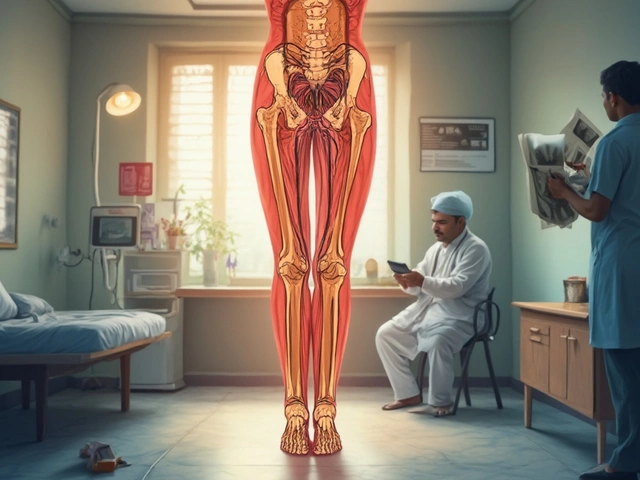Bathing After Knee Replacement: What You Need to Know
You've just had a knee replacement and the idea of a warm shower sounds amazing. But jumping into the bathroom too soon can mess up your healing. Knowing the right time and the right way to bathe helps you keep the incision clean and avoid infection.
Why Doctors Say No to Showers Early
Right after surgery the incision is still sticky and the skin around it is fragile. Water, soap, and even steam can loosen stitches or damage the dressing. That can let germs in and cause an infection, which may delay your rehab or even need another operation. Most surgeons ask you to keep the wound dry for the first 48‑72 hours, and sometimes longer if the dressing is still in place.
Another reason to wait is swelling. Hot water can increase blood flow, which sometimes makes swelling worse right after the operation. More swelling means more pain and a slower start to physiotherapy. So the early days are best spent with sponge baths or a carefully covered shower.
Practical Ways to Stay Clean
When the doctor says it’s okay to get wet (usually after the first dressing change), use a waterproof cover or a large plastic bag to protect the incision. Make sure the cover is sealed with tape so no water can seep in.
If you need to clean the area before that, grab a soft washcloth, warm water, and mild soap. Gently wipe around the incision without rubbing. Pat the skin dry with a clean towel—don’t rub.
Some people find a handheld shower head useful. It gives you control over the water flow and lets you keep the spray away from the knee. Keep the water lukewarm, not hot, and avoid direct pressure on the joint.
After you finish bathing, check the dressing for any signs of dampness or looseness. If it looks wet, change it as instructed by your surgeon or nurse. A dry, snug dressing is key to keeping the wound safe.
Remember to do your leg exercises as soon as you’re cleared. Moving the joint a little each day helps blood circulate and reduces swelling, which in turn lowers infection risk. Even simple ankle pumps can make a big difference.
If you notice redness, increased pain, a foul smell, or any fluid leaking from the incision, call your doctor right away. These are early warning signs that an infection may be developing.
Sticking to the doctor’s timeline for bathing, using protective covers, and keeping the incision dry will speed up your recovery. Soon enough you’ll enjoy a full shower without any worries and get back to your normal routine faster.






